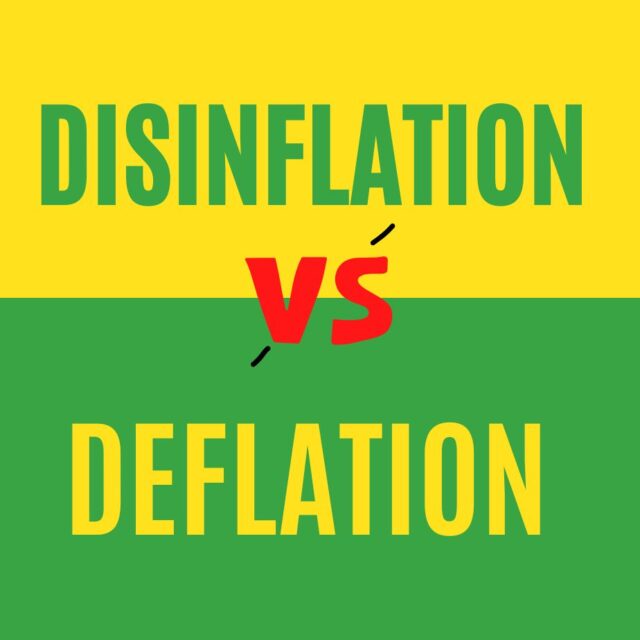
There is a lot of talk about deflation and disinflation these days, but what do they actually mean? In essence, disinflation is a slowing of the rate of inflation, while deflation is a decrease in the price level. Both can be problematic for the economy, but for different reasons. Let’s take a closer look at each one.
What is disinflation and deflation, and how are they different from one another?
Disinflation and deflation are terms used to describe a decrease in the price of goods and services. They are both types of inflation, but they differ in how quickly prices fall. Disinflation occurs when the rate of inflation slows down, while deflation occurs when the rate of inflation turns negative and prices start to fall. While disinflation can be caused by factors like reduced demand or increased production, deflation is almost always the result of a decrease in the money supply.
Deflation can be problematic because it can lead to a downward spiral of falling prices and wages, which can ultimately lead to an economic recession. However, disinflation is generally considered to be less harmful to an economy and is often seen as a sign that an economy is healthy and growing.
What causes disinflation and deflation to happen in the economy?
There are a number of factors that can cause disinflation and deflation to occur in an economy. One of the most common is a decrease in demand for goods and services. This can be caused by a number of factors, including a reduction in consumer spending or an increase in taxes.
Another common cause of disinflation and deflation is an increase in the supply of goods and services. This can be caused by increased production or by a decrease in the cost of inputs, such as raw materials or labor.
Finally, disinflation and deflation can also be caused by changes in monetary policy. For example, if the central bank decreases the money supply, this can lead to a decrease in the price level. Similarly, if the central bank increases interest rates, this can lead to a decrease in the demand for loans, which can also lead to a decrease in the price level.
How does disinflation or deflation impact businesses and consumers differently?
Disinflation occurs when the rate of inflation—the rate at which prices for goods and services rise—slows down. Deflation, on the other hand, is a decrease in the price level of goods and services. While these two terms are often used interchangeably, there are important differences between them.
For businesses, deflation can be a problem because it leads to lower profits and can cause debt to increase in real terms. For consumers, deflation may seem like a good thing because it means that their purchasing power increases. However, deflation can also lead to lower spending and investment, as people expect prices to continue falling. As a result, deflation can hurt businesses and economies overall.
Disinflation, while not as damaging as deflation, can also pose challenges for businesses. When prices are rising more slowly, businesses may find it difficult to raise prices in order to maintain their profit margins. This can limit their ability to invest and grow. For consumers, disinflation can erode purchasing power over time. Therefore, it’s important for businesses and consumers alike to monitor inflation and plan accordingly.
How can policymakers prevent disinflation or deflation from happening in the economy?
Policymakers can prevent disinflation or deflation by implementing expansionary fiscal policies. Expansionary fiscal policy is when the government increases spending or decreases taxes in order to stimulate economic growth. One way to do this is through targeted tax cuts, which can encourage more consumer spending and boost economic activity. Another way to achieve this is through government investment in infrastructure projects, which can create jobs and spur economic growth. By taking these measures, policymakers can help to ensure that prices remain stable and that the economy continues to grow.
Are there any risks associated with disinflation or deflation that policymakers need to be aware of?
One of the risks associated with disinflation is that it can lead to an increase in unemployment. This is because businesses may respond to falling prices by reducing production, which can lead to layoffs. Another risk is that deflation can lead to a spiral of falling prices and decreased demand, which can be difficult to break out of once it starts. As a result, policymakers need to be aware of these risks when making decisions about how to respond to disinflation or deflationary pressures.


































